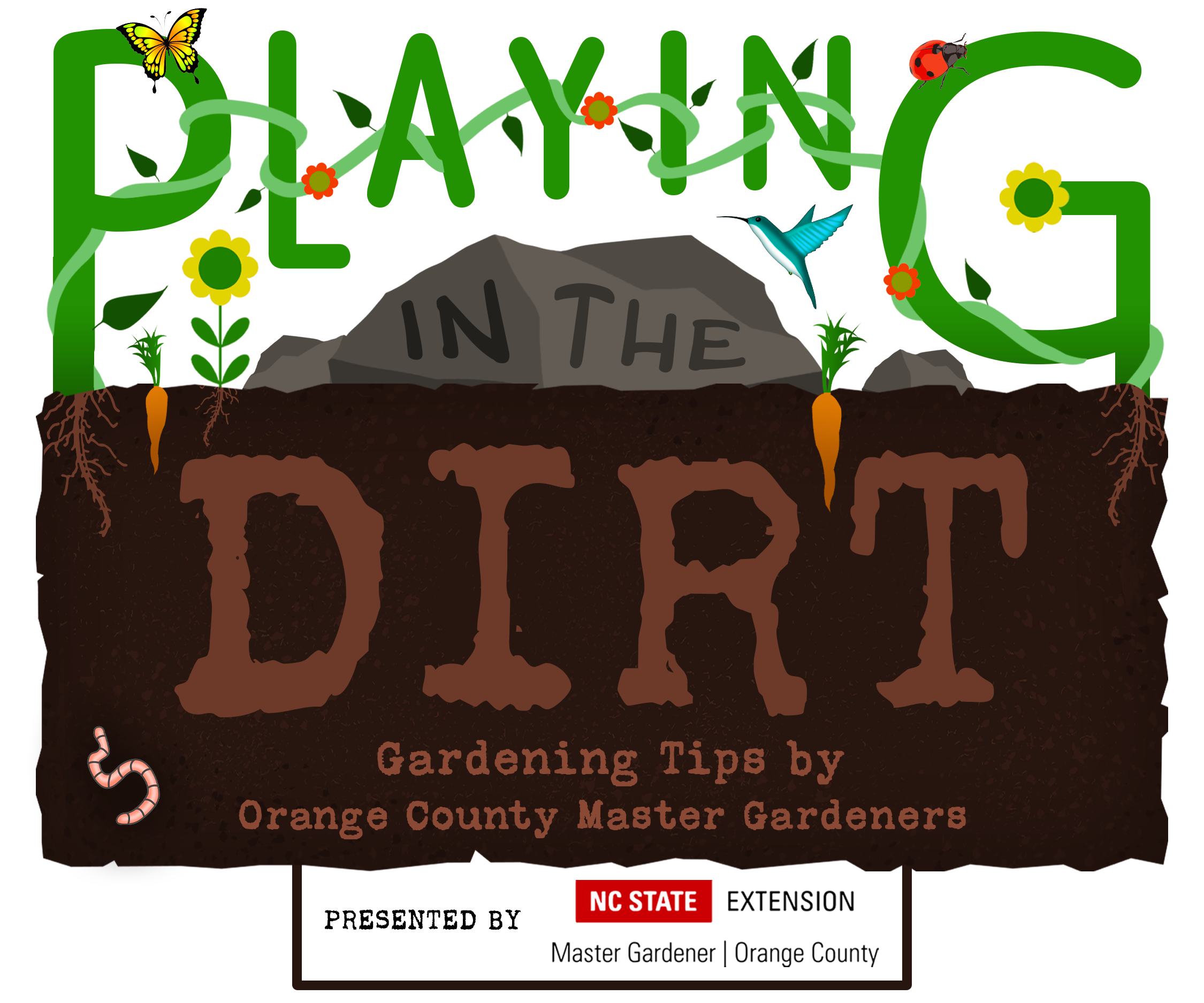By Meg Molloy and Deborah Pollard, Orange County Master Gardeners
Spring in North Carolina is always inspiring to get outside and play in the dirt!
One of the easiest and most rewarding categories of plants to grow are herbs. What can be better than snipping something you grew to make salsa, pesto or perhaps infused oils and vinegars? Or how about adding your freshly-cut herbs to a stir-fry, salad, dessert or cocktail? Because they are aromatic, herbs are generally left alone by rabbits and deer, and they don’t need a lot of fuss to perform well.

Herbs do need two things: sun and well-drained soil. So a first step is to pick locations where you have six or more hours of sun. Then decide if you want to plant in containers or window boxes to place on your patio, deck or driveway, or plant in a raised bed, or amongst ornamental flowers and shrubs in a well-amended, sunny garden.
Groupings of pots are beautiful and can be located where you can enjoy their aroma and use them often in your culinary creations. Choose pots or containers with drainage holes so that the plants can “dry out” in between waterings. Contrary to popular belief, adding gravel or stones to the bottom of the pot does not aid in draining. Gravel may actually create an environment conducive to root rot. Many herbs thrive in semi-dry soil similar to the Mediterranean climate of their origin, and overwatering can lead to root rot — they don’t like wet feet! If you stick your finger in an inch or two near the plant base and it’s dry, it’s time to water. Others, such as basil, mint and cilantro, like moisture. It is best to plant individual herbs in their own pots to cater to their unique watering needs.
If you have amended your soil so that it drains well, you can plant anywhere that you have a sunny spot. If you want to plant in the ground and your spade finds Piedmont red clay, you will need to amend your soil. Break up the top several inches of clay and add compost, pine bark soil conditioner or “pine fines,” and work it into the top eight inches of your garden bed. If you have a lot of clay, raised beds will be helpful.
Here are eight herbs that are easy to grow, look beautiful in the garden and will bring flavor to your menu:
Annual herbs
- Basil is an annual herb that is very easy to grow. There are many varieties and flavors — sweet basil, Thai, Genovese, Greek, cinnamon and many more. Select and plant basil plants from a garden center, or order organic basil seeds and plant seeds every three to four weeks until frost for an abundant basil harvest to enjoy, freeze and still have plenty to share. Basil needs an eight to 10-inch deep, two-gallon pot. In the ground, plant basil seeds 10 to 12 inches apart.
- Cilantro is best to plant in March for a spring crop and again in August to harvest in the fall. It does not grow well in North Carolina’s hot summers; it will bolt — or go to seed — quickly, and the leaves will taste bitter. So plan your summer planting to bolt, and gather the coriander seeds. If grown in a pot, choose an eight to 10-inch-deep pot.
Perennial herbs
These four perennial herbs are easier to grow from small plants found in garden centers instead of from seed.
- Rosemary and lavender are woody Mediterranean herbs that add beautiful structure and year-round color to your garden—and grow well on sunny slopes where excess water drains away, or in garden beds where clay has been amended to drain well. The upright rosemary and “Phenomenal” lavender (Phenomenal French Lavender) are cold hardy, so they do not die back over the winter and will survive our hot, humid North Carolina summers. If grown in a pot, choose one at least 12 inches deep.
- Mint is a must-have herb, but it spreads rapidly and can take over your garden, so it’s best to plant it in a beautiful, large pot at least 12 inches deep. You can leave the pot outdoors over the winter. The mint may die back, but it will re-emerge each spring. Mint does not like to dry out and does not require as much sun as do the woody Mediterranean herbs. “Kentucky Colonel” mint is a variety of spearmint that is delicious in desserts, teas and mojitos, and is the classic ingredient for mint juleps.
- Pineapple sage is a stunningly elegant red pollinator that blooms in late summer to early fall and attracts hummingbirds and butterflies. Plant it in an 18-inch-deep pot. It will overwinter in the pot or in the ground if protected by mulch. Crushed leaves are slightly sweet and smell and taste like pineapple. If you don’t spot this one in your garden center, ask when it will arrive or if they will order it for you.
The North Carolina Botanical Garden is a great place to see these and other herbs in a garden setting. For more information on growing herbs, visit these resources:
- Growing Culinary Herbs
- Culinary Herbs Are Easy to Grow
- North Carolina Extension Gardener Plant Toolbox
For more gardening tips from Orange County Master Gardener volunteers, visit The Orange Gardener website and follow us on Facebook.

97.9 The Hill and Chapelboro.com have partnered with Orange County Master Gardeners for “Playing in the Dirt,” a monthly column exploring the fertile ground of home gardening in our community and intended to provide the information and inspiration gardeners of all skills levels need to flourish! Check back on Chapelboro each month for a new subject – from our gardens to yours!
Chapelboro.com does not charge subscription fees. You can support local journalism and our mission to serve the community. Contribute today – every single dollar matters.








